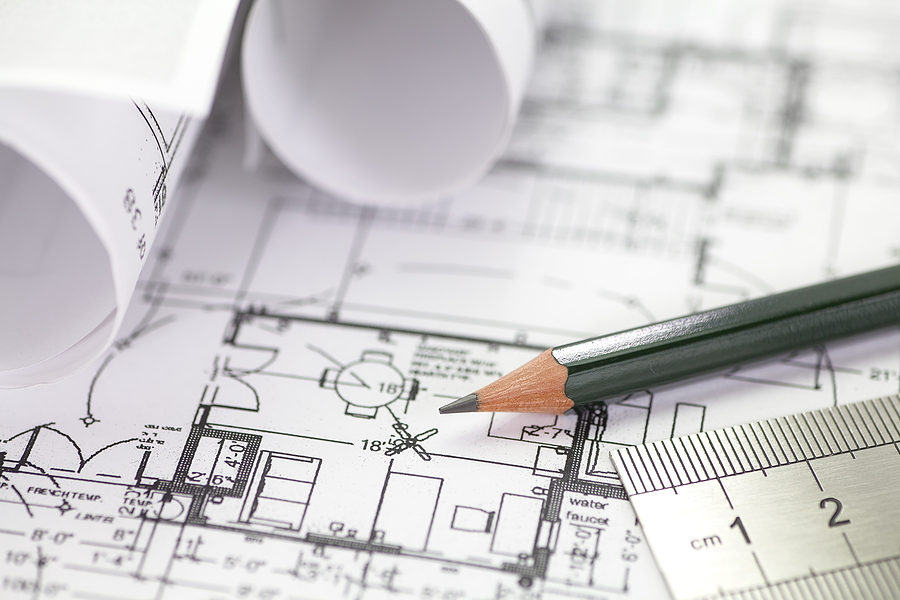Large-scale commercial renovations represent significant investments that can transform your business operations, enhance customer experiences, and increase property value. However, the construction process involves numerous moving parts that require careful planning and coordination. Without proper preparation, even well-intentioned renovation projects can quickly spiral into budget overruns, timeline delays, and operational headaches.
Successfully navigating a major commercial renovation demands more than just a vision for the finished space. Business owners and facility managers must account for regulatory requirements, coordinate multiple stakeholders, and prepare for the inevitable surprises that arise during construction. Understanding these key considerations before breaking ground will help ensure your large-scale renovation achieves its goals while minimizing disruptions to your ongoing operations.

How to Plan a Large-Scale Renovation in a Commercial Space
Set a Realistic Budget
Establishing a comprehensive budget is the foundation of any successful commercial construction project. Beyond the obvious costs of materials and labor, large renovations often involve hidden expenses that can strain your finances if not anticipated. Factor in costs for permits, inspections, temporary relocations, and potential business downtime. Many experienced construction managers recommend adding a contingency buffer of 15-20% to cover unexpected discoveries like structural issues or code compliance upgrades.
Your budget should also account for the long-term return on investment. While premium materials and systems may increase upfront costs, they often deliver better durability, energy efficiency, and tenant satisfaction over time. Work with your construction company to analyze where strategic investments will yield the greatest value for your specific renovation goals.
Hire the Right Professionals
The success of your commercial renovation hinges on assembling a qualified team of professionals. Architects, designers, and construction managers each play crucial roles in transforming your vision into reality while ensuring compliance with building codes and industry standards. However, coordinating multiple independent contractors can become a significant challenge, particularly for business owners managing day-to-day operations alongside a major renovation.
Consider partnering with a full-service construction firm that handles all contractor and sub-contracting needs under one roof. This integrated approach streamlines communication, establishes clear accountability, and reduces the administrative burden on your team.
A comprehensive construction company manages everything from electrical and plumbing subcontractors to specialized trades, ensuring seamless coordination throughout the project timeline. When evaluating potential partners, review their portfolio of completed commercial projects, verify licensing and insurance, and speak directly with previous clients about their experiences.
Understand Permits and Regulations
Navigating the regulatory landscape represents one of the most complex aspects of large-scale commercial renovations. Local building codes, zoning laws, and industry-specific regulations vary significantly by jurisdiction and can substantially impact your project scope and timeline.
ADA Compliance is non-negotiable for commercial spaces. All renovations must meet Americans with Disabilities Act standards for accessibility, including proper door widths, ramp slopes, restroom facilities, and parking accommodations. Failing to address these requirements can result in costly modifications and legal liability.
Zoning laws govern how you can use and modify your property. These regulations address building height restrictions, setback requirements from property lines, parking ratios, and permitted land uses. Verify that your renovation plans comply with local zoning ordinances before finalizing designs.
Environmental regulations come into play during demolition and construction activities. Proper handling and disposal of hazardous materials like asbestos, lead paint, and contaminated soil require specialized procedures and documentation. Your construction process must also address waste management, erosion control, and air quality standards.
Fire safety codes dictate requirements for fire-resistant materials, sprinkler system coverage, emergency exits, and egress pathways. These life safety systems are subject to rigorous inspection and must meet current standards regardless of when the building was originally constructed.
Historical preservation guidelines apply when renovating designated historic properties. These projects often require special approvals from local preservation boards and must maintain specific architectural features even when modernizing internal systems.
Energy efficiency standards are increasingly common in commercial construction. Many jurisdictions now mandate minimum performance levels for insulation, HVAC systems, lighting, and windows to reduce environmental impact and operational costs.
Noise ordinances can restrict construction activities during certain hours or days, particularly in mixed-use areas or near residential zones. Understanding these limitations helps your construction managers create realistic schedules that comply with local regulations.
Work closely with your construction company to identify all applicable permits and regulations early in the planning process. Experienced construction professionals can navigate these requirements efficiently and help avoid delays caused by compliance issues.
Contact Us Today to Schedule a Renovation Bid ☑
Create a Detailed Timeline
A well-structured project timeline serves as your roadmap through the construction process. Break down the large renovation into distinct phases with specific milestones and completion dates. Account for sequential dependencies where certain tasks must finish before others can begin, such as completing structural modifications before installing new electrical systems.
Be realistic about duration estimates. Commercial renovations typically take longer than anticipated due to factors like material delivery delays, weather conditions, inspection schedules, and change orders. Build buffer time into your timeline to absorb minor setbacks without derailing the entire project. Coordinate with your construction managers to identify critical path activities where delays would have the most significant impact on your completion date.
For businesses maintaining operations during renovation, carefully plan phased construction that minimizes disruption to customers and employees. Some projects benefit from off-hours work or temporary space reconfigurations that keep essential areas accessible throughout the construction timeline.
Plan for Contingencies
No matter how thoroughly you plan, unexpected issues will arise during a large-scale renovation. Older buildings may reveal hidden structural damage, outdated systems, or environmental concerns once demolition begins. Supply chain disruptions can delay material deliveries. Design changes may become necessary as the project evolves.
Preparing for these contingencies requires both financial and logistical flexibility. Maintain your budget reserve specifically for addressing unforeseen circumstances rather than treating it as discretionary funds for upgrades. Establish decision-making protocols with your construction company so that urgent issues can be resolved quickly without stalling progress while awaiting approvals.
Develop backup plans for critical business functions. If renovation work impacts essential areas, identify alternative spaces or temporary solutions that keep operations running. Consider how you’ll handle scenarios like extended timelines, equipment failures, or necessary design modifications that affect the project scope.
Communicate Effectively
Clear, consistent communication among all stakeholders is essential for successful commercial construction projects. Establish regular check-ins with your construction managers to review progress, address concerns, and make timely decisions. These meetings should include representatives from your business operations team, the construction company, key subcontractors, and relevant regulatory authorities.
Document all discussions, decisions, and changes in writing to maintain a clear record throughout the project timeline. This documentation proves invaluable when questions arise about specifications, approvals, or modifications to the original plans. Use project management tools that allow all parties to access updated drawings, schedules, and communications in real-time.
Don’t neglect communication with employees, tenants, and customers who will be affected by the renovation work. Provide advance notice of construction activities, temporary closures, or changes to access routes. Keeping these stakeholders informed reduces frustration and maintains positive relationships during the inevitable disruptions of a large renovation.
In Summary
Large-scale commercial renovations offer tremendous opportunities to modernize your space, improve efficiency, and increase property value. However, realizing these benefits requires careful planning, experienced professionals, and realistic expectations about the construction process. By setting appropriate budgets, understanding regulatory requirements, creating detailed timelines, and maintaining clear communication, you position your project for success from the first consultation through final completion.
The right construction company serves as your partner throughout this journey, bringing expertise in construction management, regulatory compliance, and problem-solving to keep your commercial renovation on track. Contact Us Today to discuss your project goals and learn how our comprehensive approach to commercial construction can transform your vision into reality.
Related Post: Planning a Successful Commercial Build: A Step-by-Step Guide












